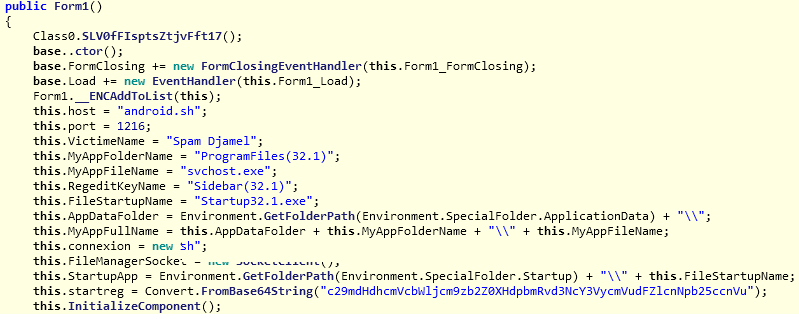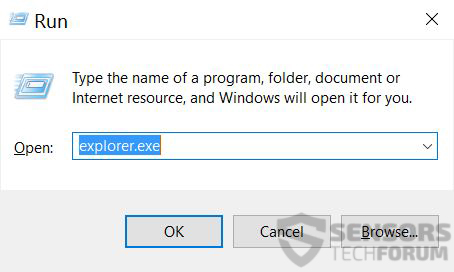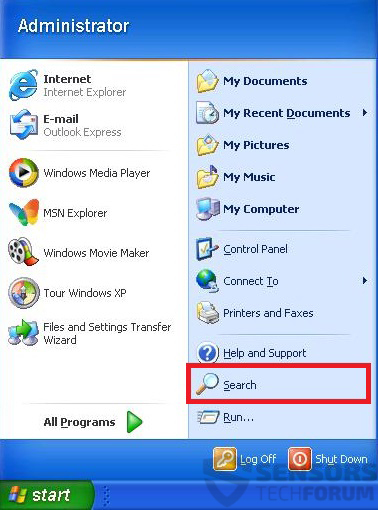Spymel is the name given by Zscaler researchers to a newly found Trojan horse. The Trojan can spy on all user activity. It may log keystrokes and steal information on a compromised computer and send the data to a remote location.
| Name | Spymel |
| Type | Trojan, Infostealer |
| Short Description | The Trojan is an infostealer type. It connects to a Command and Control server to receive and execute commands. All gathered information is sent back to the attacker. |
| Symptoms | The Trojan steals data, including keystroke information. It can spy on all user activity. |
| Distribution Method | Targeted Attacks, Email Attachments |
| Detection Tool | Download Malware Removal Tool, to See If Your System Has Been Affected by malware |
| User Experience | Join our forum to discuss Spymel. |
Spymel Trojan – Delivery
The most typical way that you can get infected with the Spymel Trojan horse is via an email attachment. The email attachment is usually a .zip archive containing a JavaScript file. Once that file is run, the malware is downloaded and installed on a compromised machine.
Another delivery method is by installing the Trojan manually as software pretending to be helpful. Instead, you are getting the malware injected into your computer. What is known to spread such infections are browser exploits, such as plugins, extensions, or suspicious sites with malicious code on them.
Spymel Trojan – Technical Information
Spymel is classified as a Trojan horse. The Trojan is an infostealer type. The malware executable containing the files and settings of Spymel has a clever design. According to Zscaler researchers, it tries to conceal its origin and also gain authenticity by hiding behind stolen certificates of the software publisher SBO Invest. That way, security programs may not have detected it a few days ago, when it was discovered to be its first attack.
Once executed on a compromised machine, the Spymel Trojan begins creating files masked as the Windows’ svchost process:
→%AppData%\Roaming\ProgramFiles(32.1)\svchost.exe
%AppData%\Roaming\ProgramFiles(32.1)\svchost.exe.tmp
%AppData%\Roaming\Microsoft\Windows\StartMenu\Programs\Startup\Startup32.1.exe
%UserProfile%\Application Data\ProgramFiles(32.1)\svchost.exe
%UserProfile%\Application Data\ProgramFiles(32.1)\svchost.exe.tmp
%UserProfile%\Start Menu\Programs\Startup\Startup32.1.exe
To remain persistant and run itself and its settings with every start of Windows, the Trojan makes the following registry entries:
→HKEY_CURRENT_USER\Software\Microsoft\Windows\AppPath\”%UserProfile%\Application Data\ProgramFiles(32.1)\svchost.exe”
→HKEY_CURRENT_USER\Software\Microsoft\Windows\CurrentVersion\Explorer\StartupApproved\RunSidebar(32.1)
→HKEY_CURRENT_USER\Software\Microsoft\Windows\CurrentVersion\Explorer\StartupApproved\StartupFolder\Startup32.1.exe
After these operations, the Trojan will modify Windows Firewall settings, and connect remotely to a Command and Control server. The location of the server is with the address 213.136.92.111 on port 1216, hidden in the Spymel Trojan’s settings:

Source: Zscaler
When connected to the remote server, all gathered information will be sent to it, including keystroke logs. From that Command and Control server, the Spymel Trojan can receive commands that do the following actions:
- Send information of user names, OS, started processes, video module flag, titles of active windows.
- Send information about drives in system.
- Send information about folders and files for certain locations.
- Delete a file or folder.
- Execute a specific file.
- Rename a specific file or folder.
- Uninstall itself.
- Upload logs of keystrokes to the Command and Control server.
- Upload requested files to the Command and Control server.
- Search for a string in all keylogging files.
- Delete a keylogging file.
- Send a Desktop screenshot.
- Download files from a URL.
- Switch video recording On and Off.
- Provide settings of video recording for explicit processes.
To make matters worse, the Trojan has a protection implemented in itself called ProtectMe, which makes shutting Spymel down manually, impossible, while that protection is intact. Its purpose is to look for and close all tools like TaskMgr, Procexp, ProcessHacker and Taskkill, which are all used for process termination.
Spymel Trojan – Removal
The Trojan horse can spy on you, gain access to all kinds of data on your computer and also may infect you with different malware if left untouched. All gathered information can be sent back to hackers, and be used for profit. To completely get rid of the Spymel Trojan horse from your computer, carefully follow the step-by-step removal instructions provided below.
Manually delete Spymel
Note! Substantial notification about the Spymel threat: Manual removal of Spymel requires interference with system files and registries. Thus, it can cause damage to your PC. Even if your computer skills are not at a professional level, don’t worry. You can do the removal yourself just in 5 minutes, using a malware removal tool.
Automatically remove Spymel from your computer
Preparation before removing Spymel.
Before starting the actual removal process, we recommend that you do the following preparation steps.
- Make sure you have these instructions always open and in front of your eyes.
- Do a backup of all of your files, even if they could be damaged. You should back up your data with a cloud backup solution and insure your files against any type of loss, even from the most severe threats.
- Be patient as this could take a while.
- Scan for Malware
- Fix Registries
- Remove Virus Files
Step 1: Scan for Spymel with SpyHunter Anti-Malware Tool



Step 2: Clean any registries, created by Spymel on your computer.
The usually targeted registries of Windows machines are the following:
- HKEY_LOCAL_MACHINE\Software\Microsoft\Windows\CurrentVersion\Run
- HKEY_CURRENT_USER\Software\Microsoft\Windows\CurrentVersion\Run
- HKEY_LOCAL_MACHINE\Software\Microsoft\Windows\CurrentVersion\RunOnce
- HKEY_CURRENT_USER\Software\Microsoft\Windows\CurrentVersion\RunOnce
You can access them by opening the Windows registry editor and deleting any values, created by Spymel there. This can happen by following the steps underneath:


 Tip: To find a virus-created value, you can right-click on it and click "Modify" to see which file it is set to run. If this is the virus file location, remove the value.
Tip: To find a virus-created value, you can right-click on it and click "Modify" to see which file it is set to run. If this is the virus file location, remove the value.Step 3: Find virus files created by Spymel on your PC.
1.For Windows 8, 8.1 and 10.
For Newer Windows Operating Systems
1: On your keyboard press + R and write explorer.exe in the Run text box and then click on the Ok button.

2: Click on your PC from the quick access bar. This is usually an icon with a monitor and its name is either “My Computer”, “My PC” or “This PC” or whatever you have named it.

3: Navigate to the search box in the top-right of your PC's screen and type “fileextension:” and after which type the file extension. If you are looking for malicious executables, an example may be "fileextension:exe". After doing that, leave a space and type the file name you believe the malware has created. Here is how it may appear if your file has been found:

N.B. We recommend to wait for the green loading bar in the navigation box to fill up in case the PC is looking for the file and hasn't found it yet.
2.For Windows XP, Vista, and 7.
For Older Windows Operating Systems
In older Windows OS's the conventional approach should be the effective one:
1: Click on the Start Menu icon (usually on your bottom-left) and then choose the Search preference.

2: After the search window appears, choose More Advanced Options from the search assistant box. Another way is by clicking on All Files and Folders.

3: After that type the name of the file you are looking for and click on the Search button. This might take some time after which results will appear. If you have found the malicious file, you may copy or open its location by right-clicking on it.
Now you should be able to discover any file on Windows as long as it is on your hard drive and is not concealed via special software.
Spymel FAQ
What Does Spymel Trojan Do?
The Spymel Trojan is a malicious computer program designed to disrupt, damage, or gain unauthorized access to a computer system. It can be used to steal sensitive data, gain control over a system, or launch other malicious activities.
Can Trojans Steal Passwords?
Yes, Trojans, like Spymel, can steal passwords. These malicious programs are designed to gain access to a user's computer, spy on victims and steal sensitive information such as banking details and passwords.
Can Spymel Trojan Hide Itself?
Yes, it can. A Trojan can use various techniques to mask itself, including rootkits, encryption, and obfuscation, to hide from security scanners and evade detection.
Can a Trojan be Removed by Factory Reset?
Yes, a Trojan can be removed by factory resetting your device. This is because it will restore the device to its original state, eliminating any malicious software that may have been installed. Bear in mind that there are more sophisticated Trojans that leave backdoors and reinfect even after a factory reset.
Can Spymel Trojan Infect WiFi?
Yes, it is possible for a Trojan to infect WiFi networks. When a user connects to the infected network, the Trojan can spread to other connected devices and can access sensitive information on the network.
Can Trojans Be Deleted?
Yes, Trojans can be deleted. This is typically done by running a powerful anti-virus or anti-malware program that is designed to detect and remove malicious files. In some cases, manual deletion of the Trojan may also be necessary.
Can Trojans Steal Files?
Yes, Trojans can steal files if they are installed on a computer. This is done by allowing the malware author or user to gain access to the computer and then steal the files stored on it.
Which Anti-Malware Can Remove Trojans?
Anti-malware programs such as SpyHunter are capable of scanning for and removing Trojans from your computer. It is important to keep your anti-malware up to date and regularly scan your system for any malicious software.
Can Trojans Infect USB?
Yes, Trojans can infect USB devices. USB Trojans typically spread through malicious files downloaded from the internet or shared via email, allowing the hacker to gain access to a user's confidential data.
About the Spymel Research
The content we publish on SensorsTechForum.com, this Spymel how-to removal guide included, is the outcome of extensive research, hard work and our team’s devotion to help you remove the specific trojan problem.
How did we conduct the research on Spymel?
Please note that our research is based on an independent investigation. We are in contact with independent security researchers, thanks to which we receive daily updates on the latest malware definitions, including the various types of trojans (backdoor, downloader, infostealer, ransom, etc.)
Furthermore, the research behind the Spymel threat is backed with VirusTotal.
To better understand the threat posed by trojans, please refer to the following articles which provide knowledgeable details.


 1. For Windows 7,XP and Vista.
1. For Windows 7,XP and Vista. 2. For Windows 8, 8.1 and 10.
2. For Windows 8, 8.1 and 10.











 1. Install SpyHunter to scan for and remove Spymel.
1. Install SpyHunter to scan for and remove Spymel.

















 STOPZilla Anti Malware
STOPZilla Anti Malware



